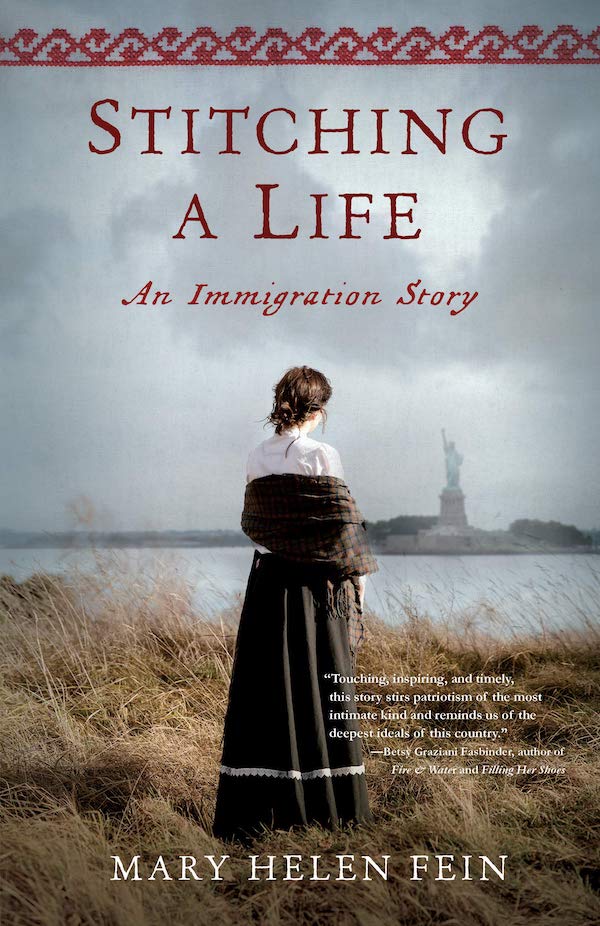“Stitching a Life: An Immigration Story”
by Mary Helen Fein

Stitching a Life: An Immigration Story
by Mary Helen Fein
256 pp., She Writes Press, 2020
$16.95 (paperback)
Immigration is a quintessentially American story; and it’s a personal one for Mary Helen Fein. Her grandmother, Helen Breakstone Fein, left the Russian Empire in 1900 to make the long journey to the United States. Her family was Jewish and originated in what is now Lithuania. As such, they faced not only official Russian antisemitism—often expressed through discrimination and sometimes pogroms—but also the native antisemitism of the Lithuanian people. The city from the vicinity of which Fein’s family originated, Kaunas, had one of the largest Jewish populations in Europe—then; it’s no coincidence that it was one of the first to be exterminated in the Nazi Holocaust of World War II. Stitching a Life is a fictionalization of Hein’s family story of leaving Lithuanian for the United States, insofar as she could recreate it from oral history and genealogical research.
The story begins with Fein’s grandmother, then fifteen years old and named Hinde, working at a moderately prosperous dairy farm across the river from Kaunas. As the narrative opens, the family is busy hiding her younger brother Max from conscription into the Russian Army, and working to make ends meet, to plan a new life in America. As happened so often with immigrant families, cousins have established themselves in America, and offer a vital connection for the Breakstones as they prepare to make their journey. Fein carefully describes the outlines of the Breakstone family’s life in Lithuania, and the process by which Hinde takes the first step in traveling across the Atlantic, with the other family members to follow one or a few at a time, as they can afford it.
The trip across the Atlantic is cramped and tedious, although Hinde—who changes her name to Helen—makes a friend, Rebecca, who shares her travails as they pass through Ellis Island. From there it’s on to Texas for Rebecca, and New York City for Helen. There, she falls in with her extended Jewish family, acculturates to life in the big city, and moves into the clothing business that they have established—thus the book’s title. Her life from then on is like millions of other European immigrants in all over America: toiling daily; saving and building bit by bit to establish happy and prosperous lives for their families. The lucky ones, that is. Many of these poor immigrants, contrary to the mythology cherished by generations of descendants, never managed to prosper, and lived in poverty.
None of that strife and trouble is evident in Stitching a Life—none of the bitter despair appearing in, for example, books about first and second-generation immigrant life in Chicago such as Upton Sinclair’s The Jungle; James T. Farrell’s Studs Lonigan; or Nelson Algren’s Never Come Morning. Unlike those hard-hitting adult novels, Fein’s purpose in this young adult tale is to lovingly recapture the seemingly happy and successful lives of her ancestors, and to recreate in a virtual word painting the outlines of Jewish life and culture in New York City around the turn of the twentieth century. Other young adult tales of immigration in this era, such as M.J. Auch’s Ashes of Roses, however, have managed to expose the raw edge of the immigrant experience in a young adult context. The absence of that sense of risk, drama, and occasional tragedy in Stitching a Life, which culminates in a joyful love story largely devoid of tension, deflates it into the author’s deeply personal reverie about her family’s past: meaningful to her, and characteristic of many middle-of-the-road immigrant family stories as they were lived, but without the lively essence of good literature.
Ed Lengel is the Chief Historian at the National Medal of Honor Museum; Arlington, Texas



